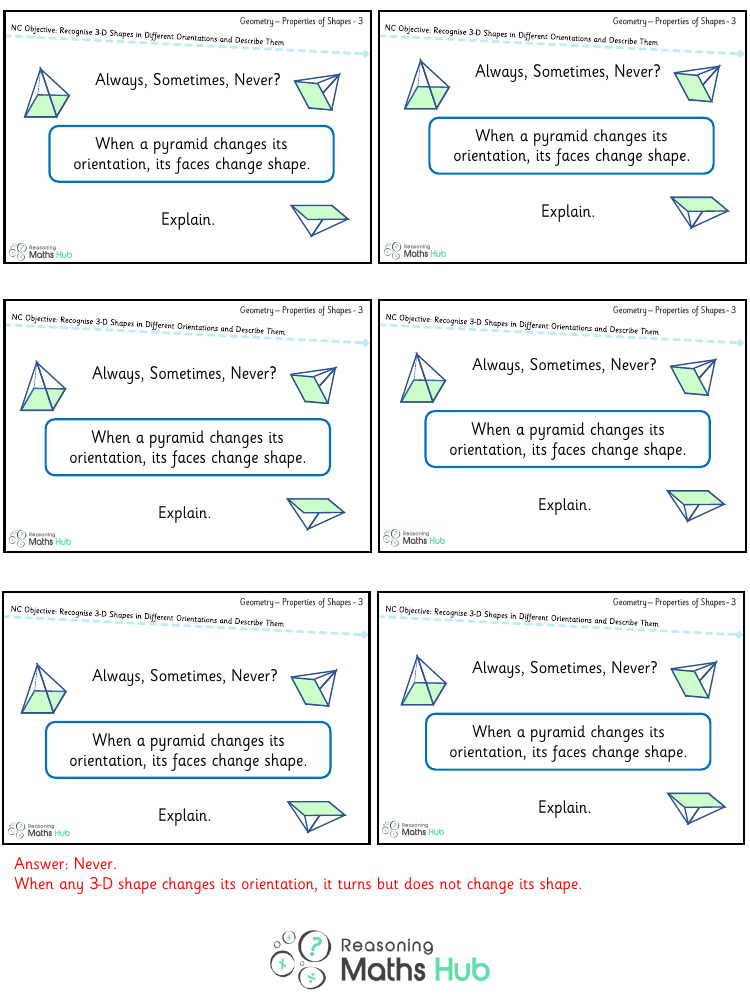Recognise 3-d shapes in different orientations and describe them 3 - Reasoning

Maths Resource Description
Understanding 3-dimensional shapes and their properties is a key aspect of geometry education. To enhance this understanding, students are encouraged to recognise 3-D shapes in various orientations and to describe them effectively. This involves identifying common 3-D shapes such as cubes, cylinders, spheres, pyramids, and prisms, regardless of the angle from which they are viewed. Recognising these shapes in different orientations can be challenging, as the same shape can look quite different when rotated or viewed from another perspective.
During reasoning activities, students are tasked with describing the attributes of these shapes, such as the number of faces, edges, and vertices, as well as the shape of the faces themselves. For instance, a cube has six square faces, twelve edges, and eight vertices, whereas a cylinder has two circular faces and one curved surface. By engaging in these exercises, students develop their spatial awareness and descriptive vocabulary, enabling them to articulate the characteristics of 3-D shapes and understand their geometric properties more deeply.
